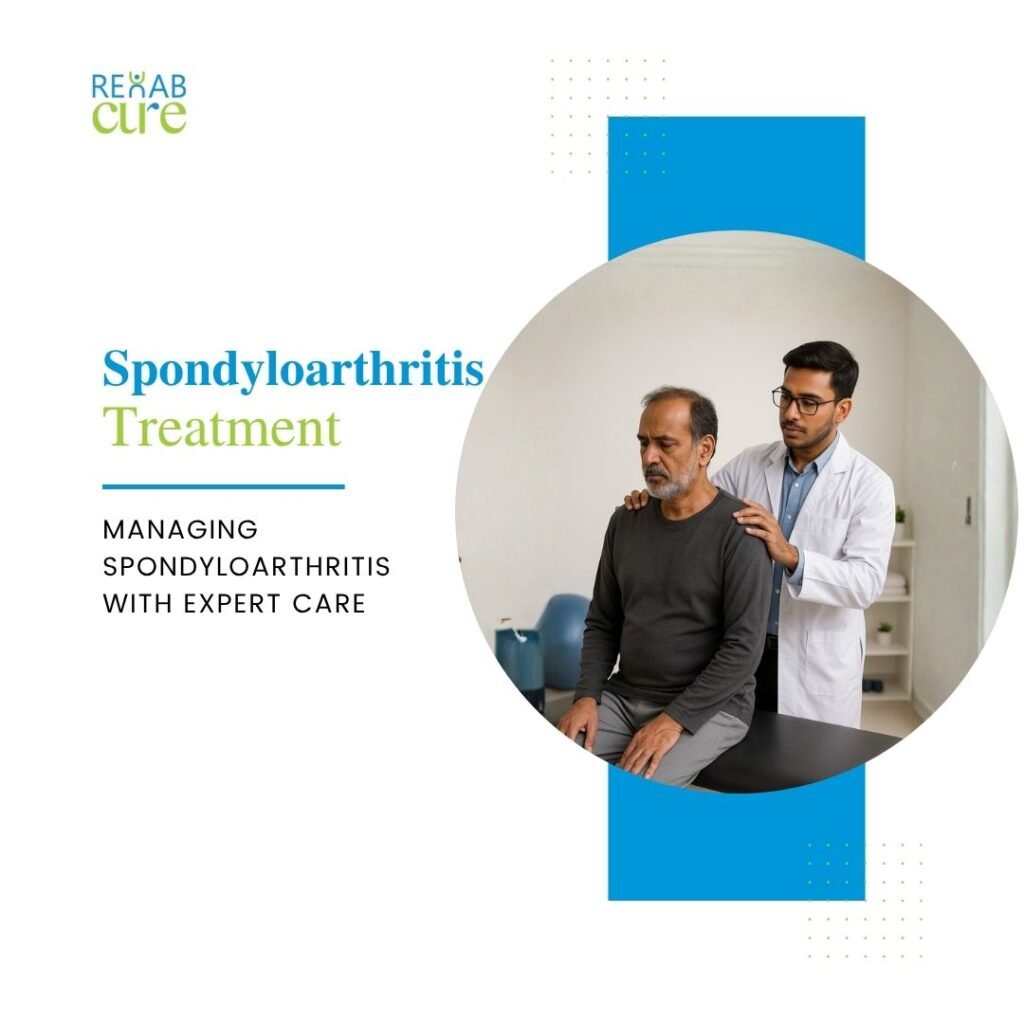Table of Contents
Spondyloarthritis Treatment:
Living with habitual reverse or joint pain can be physically and emotionally draining. For numerous people, these symptoms are signs of an underlying seditious condition known as spondyloarthritis. This group of diseases primarily affects the chin and joints, causing pain, stiffness, and reduced mobility. The good news is that with the right spondyloarthritis treatment, cases can effectively manage symptoms, slow the progression of complaints, and ameliorate their overall quality of life. This comprehensive companion explains everything you need to know about spondyloarthritis—its causes, symptoms, and the stylish treatment options available at the moment.
What Is Spondyloarthritis?
Spondyloarthritis (gym) is a type of seronegative arthritis that substantially affects the spine, but it can also involve other joints, tendons, and ligaments. Unlike mechanical reverse pain caused by injury or posture, this condition is autoimmune in nature, meaning the body’s vulnerable system ineptly attacks its own apkins.
There are several subtypes of spondyloarthritis, including:
- Ankylosing Spondylitis (AS) primarily affects the spine and sacroiliac joints.
- Psoriatic Arthritis (PsA) is linked with psoriasis, a skin condition causing red, scaly patches.
- Reactive arthritis develops after an infection in another part of the body.
- Enteropathic arthritis is associated with inflammatory bowel conditions like Crohn’s disease and ulcerative colitis.
- Undifferentiated Spondyloarthritis: When symptoms don’t fit a specific order.
- Each type shares common features such as inflammation, stiffness, and pain, particularly in the lower back and hips.
Causes and Threat Factors
The exact cause of spondyloarthritis isn’t completely understood, but it’s believed to be a combination of inherited and environmental factors.
1. inheritable Factors
One of the strongest threat factors is the presence of a gene called HLA-B27. People who carry this gene are more likely to develop the complaint, although not everyone with the strongest risk factors has the presence of a gene called HLA-B27. People who carry this gene are more likely to develop the complaint, although not everyone with it will witness symptoms. one with it will witness symptoms
2. Immune System Dysfunction
The vulnerable system plays a central part in driving inflammation that damages joints and connective tissues.
3. Infections
Certain bacterial or viral infections can spark an abnormal, vulnerable response, leading to inflammation in susceptible individuals.
4. Life and Environmental Alarms
Smoking, poor posture, and lack of physical exertion can worsen symptoms and accelerate common damage.
Common Symptoms of Spondyloarthritis
Fighting early symptoms is pivotal for effective spondyloarthritis treatment. Common signs include
The patient has lower reverse pain and stiffness, especially in the morning or after rest
Pain in the hips, shoulders, or knees
Fatigue and general fatigue due to habitual inflammation
Reduced inflexibility or difficulty bending and twisting
opinion of Spondyloarthritis:
An accurate opinion requires a combination of clinical evaluation, imaging, and laboratory tests. Early opinion ensures that treatment can begin before endless common damage occurs.
1. Medical History and Physical Examination Croakers assess your pain pattern, family history, and any other autoimmune conditions.
2. Blood Tests. Tests may include the HLA-B27 inheritable marker, as well as labels of inflammation such as C-reactive protein (CRP) and erythrocyte sedimentation rate (ESR).
3. Imaging Tests X-rays disclose structural changes in the spine and sacroiliac joints. MRI Scans Identify inflammation before it appears on X-rays.

Spondyloarthritis Treatment Options
Although there’s no cure for spondyloarthritis, several treatments can effectively control symptoms and prevent complications. A combination of medical remedies, activity, life changes, and exercise forms the foundation of care.
1. drug-grounded treatment
Non-Steroidal Anti-Inflammatory Medicines (NSAIDs)
These are generally the first line of treatment. Specifics like ibuprofen, naproxen, or diclofenac reduce inflammation, relieve pain, and ameliorate mobility. Disease-modifying antirheumatic medicines (DMARDs). For cases with severe or common patient inflammation, DMARDs such as sulfasalazine or methotrexate can decelerate complaint progression.
Biologic curatives
Biologics have revolutionized spondyloarthritis treatment by targeting specific seditious molecules in the vulnerable system.
Common biologics include
TNF inhibitors are etanercept, adalimumab, and infliximab. IL-17 inhibitors are secukinumab and ixekizumab. These specifics are especially effective for cases that don’t respond to traditional treatments. Corticosteroids: Short-term steroid injections can quickly reduce inflammation in specific joints or tendons.
2. Physiotherapy and Exercise
Activity is a foundation of the spondyloarthritis operation. Regular movement helps maintain flexibility, strength, and posture—crucial rudiments for precluding spinal degeneration and stiffness. Benefits of Physiotherapy: Reduces pain and muscle pressure. Improves posture and spinal alignment. Enhances mobility and common inflexibility. Prevents long-term scars. A trained physiotherapist designs customized exercise plans, including stretching routines for spinal flexibility, strength training for core stability, breathing exercises to expand chest mobility, and hydrotherapy (water exercises) for low-impact movement. At specialized conventions like Rehabcure, physiotherapists use advanced ways similar to homemade remedies, electrotherapy, and posture correction exercises to support long-term recovery.
3. life variations
Life adaptations play a pivotal part in managing symptoms and addressing treatment issues. Maintain regular physical exertion. Engaging in daily exercise prevents stiffness and maintains common function. Conditioning like swimming, yoga, and walking is ideal. Stop Smoking. Smoking accelerates inflammation and increases the threat of spinal degeneration. Maintain a Healthy Weight. Excessive body weight adds pressure on joints and worsens pain. A balanced diet rich in anti-inflammatory foods can be salutary. Correct Posture: Good posture reduces stress on the spine and improves overall comfort.
4. Nutrition and Diet
While no specific diet can cure spondyloarthritis, certain foods can help manage inflammation Omega- 3 adipose acids from fish or flaxseeds reduce seditious exertion. Antioxidant-rich foods like fruits, vegetables, and nuts support vulnerable health. Avoid reused foods and high- sugar diets that spark inflammation. Staying doused and maintaining a balanced nutrient input is also vital for joint and towel health.
